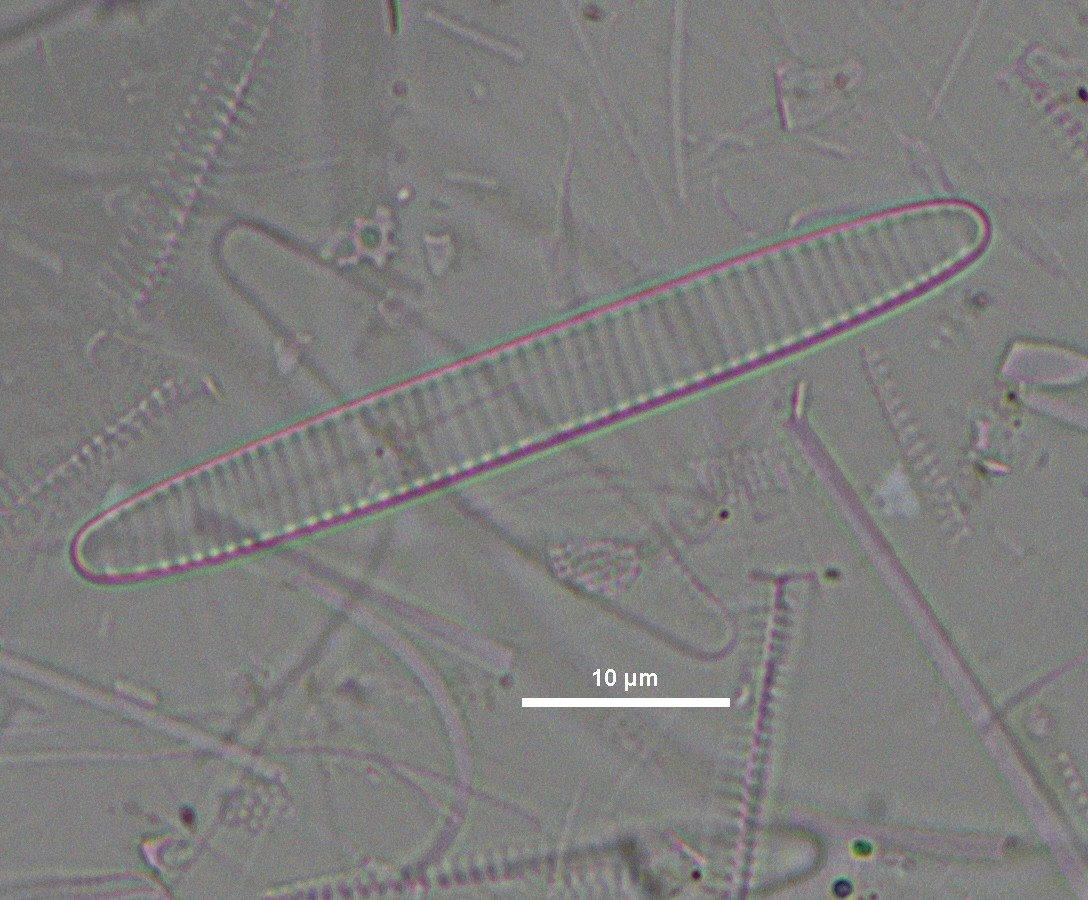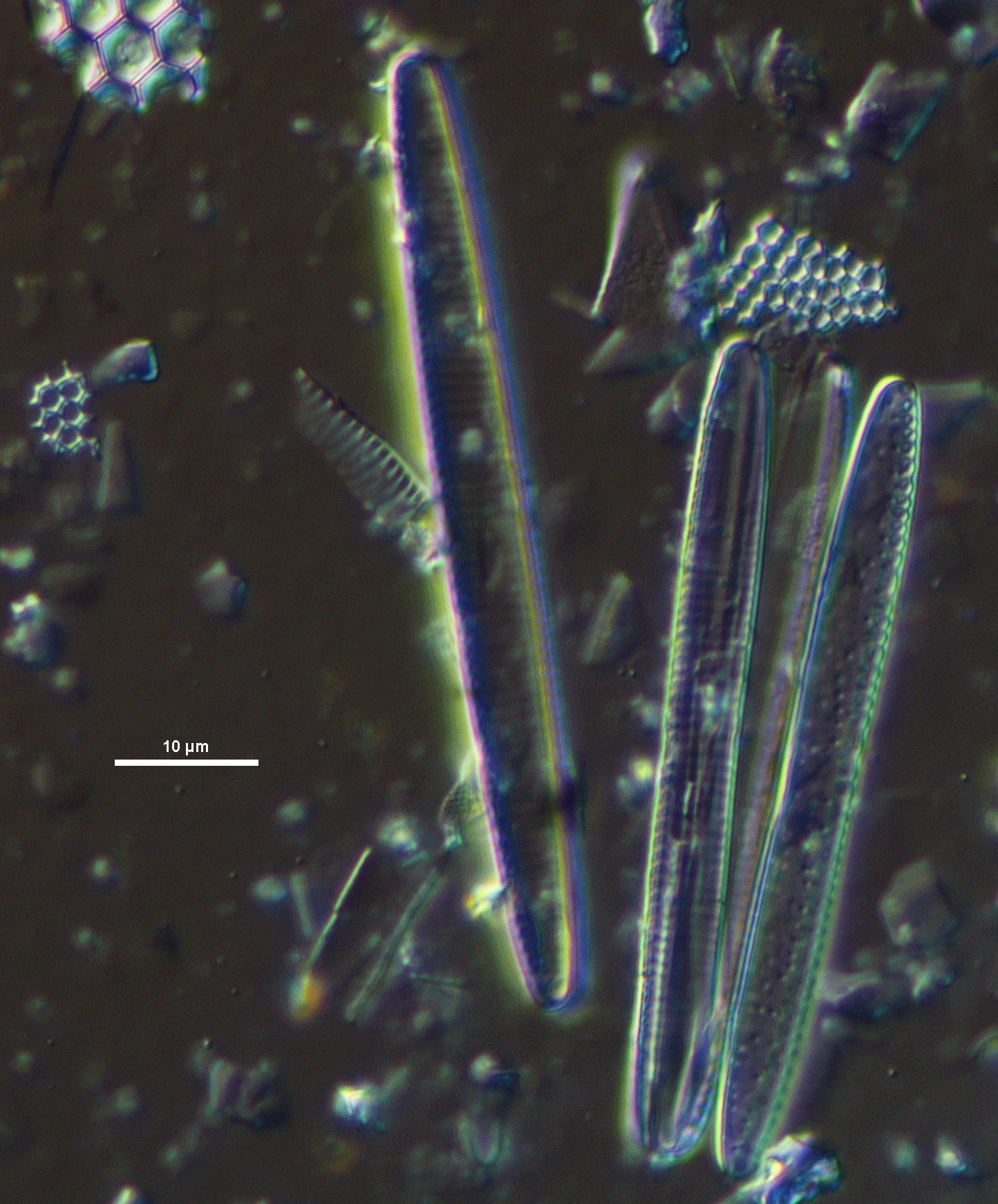Sea Ice Proxy
for the Bering and Chukchi seas based on 5 species of diatoms:
Sinerima marigela, Fragilariopsis reginae-jahniae, Fragilariopsis cylindrus, Paralia sulcata and Neodenticula seminae

It is possible the downloaded file will be without an extension. In that case, just add .csv and edit it in Excel
Five species of diatoms, commonly found in Beringia, are used in this proxy for reconstructing sea ice concentrations: Sinerima marigela Nesterovich & Caissie 2018, characteristic of high sea ice concntrations, Fragilariopsis reginae-jahniae Witkowski, Lange-Bertalot & Metzeltin 2000 and Fragilariopsis cylindrus (Grunow ex Cleve) Helmcke & Krieger 1954, peaking in abundance at 40-50% sea ice, Paralia sulcata (Ehrenberg) Cleve 1873, found at 20-40% sea ice, and Neodenticula seminae (R.Simonsen & T.Kanaya) Akiba & Yanagisawa 1986, known for avoiding sea ice.
Sinerima marigela Nesterovich & Caissie
Fragilariopsis reginae-jahniae Witkowski, Lange-Bertalot & Metzeltin, counted WITHOUT its resting spores


Fragilariopsis cylindrus (Grunow ex Cleve) Helmcke & Krieger
Paralia sulcata (Ehrenberg) Cleve


Neodenticula seminae (R.Simonsen & T.Kanaya) Akiba & Yanagisawa
This proxy was developed at Marine Sediments Lab by Anna Nesterovich to reconstruct sea ice concentration in the Bering and Chukchi seas. We fitted Generalized Additive Model (GAM) to a set of 104 surface sediment samples with known sea ice concentration averaged over 10 years for March, April, May, and June (MAMJ). The species for the model were chosen after fitting Random Forests model to the data. For details on the models, please see our publication: Our soon published paper here
The proxy may not (and probably will not) work outside Beringia.
For the proxy to work on your data, it has to be recognizable by our R code. Please call the five species in your counts as Neodenticula_seminae, Paralia_sulcata, Sinerima_marigela, Fragilariopsis_reginae_jahniae, and Fragilariopsis_cylindrus. You also have to have column called 'Age' in your data with numbers only (It's ok if you only have depth, just call it Age). Unfortunately, any other names will not work for now. It's ok to have other columns in the file, the model will ignore them, but names must not have spaces in them. After you re-name the columns, save the file as .txt ot .csv. The file should look somewhat like the example below.

Note that by submitting your dataset on this page you are not sharing your data with anyone. The authors of the app will not have access to the data you upload or download. However, if some of those particular five species don't work for your samples, there are variations of the proxy using Ehrenbergia granulosa, Chaetoceros hyaline resting spores, Fossula arctica, Shionodiscus trifultus, Rhizolenia hebetata, and Fragilariopsis oceanica, as well as combined vegetative and resting spores of Fragilariopsis reginae-jahniae If you want to use them instead, contact the authors